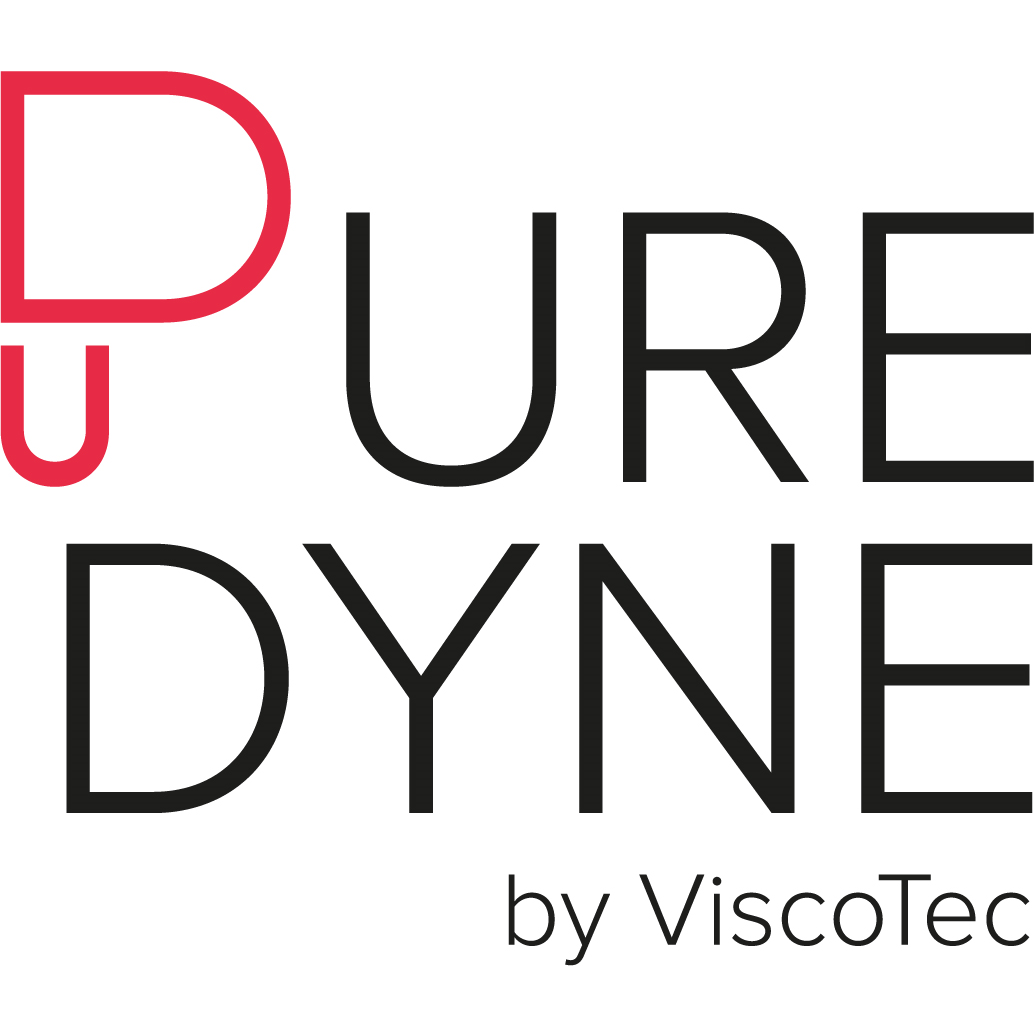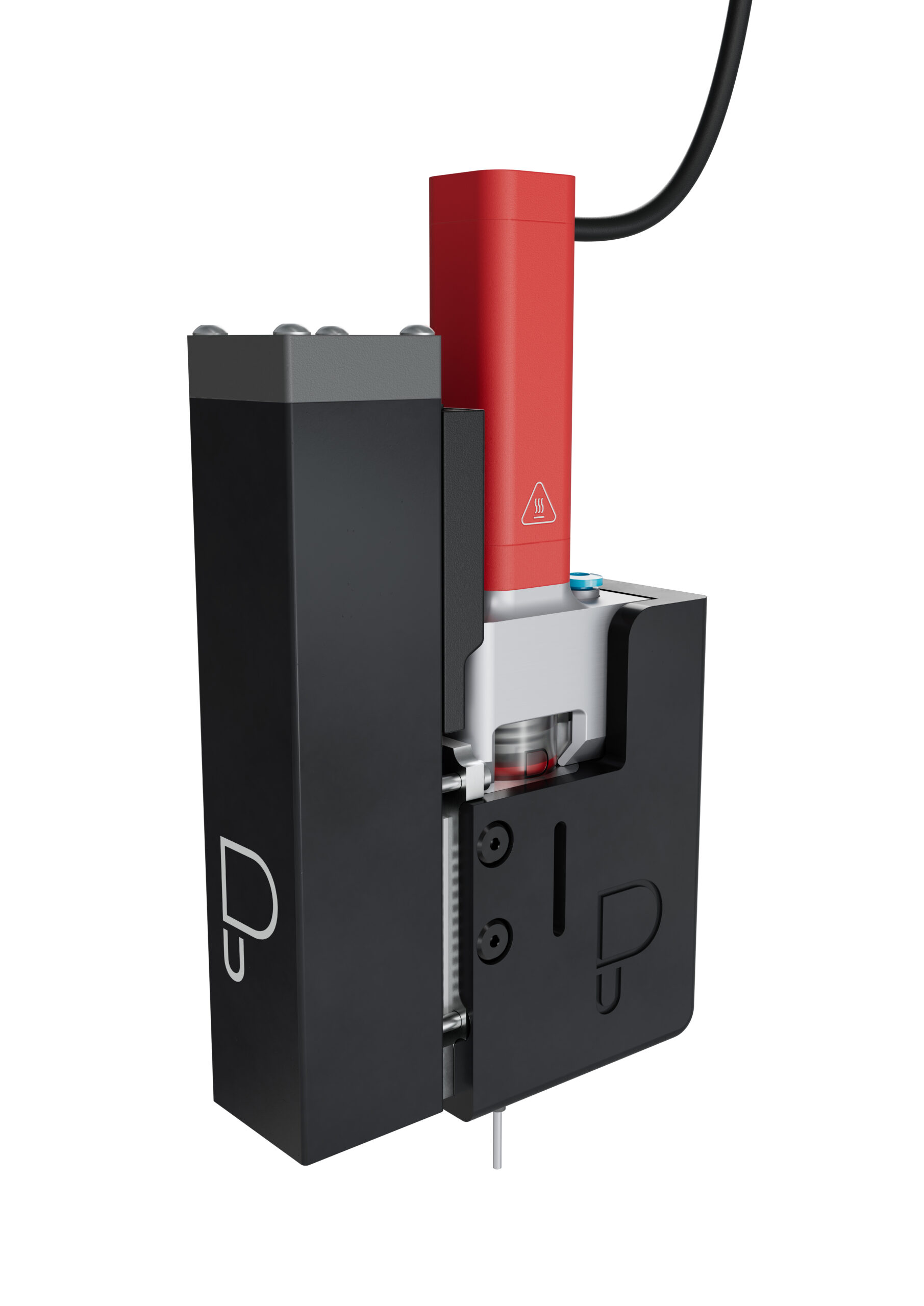Puredyne printhead gets its own modular heating and cooling system
One parameter that has made bioprinting of organic cell suspensions not 100% controllable to date is temperature sensitivity. A new heating and cooling unit – recently developed by Puredyne – now solves this problem and ensures optimal survival conditions for cells throughout the entire process. The temperature can be set between 39.2°F and 104°F. With this unit, the flow behavior of the dosing media can be positively influenced by heating or cooling to ensure a stable process with reproducible results – especially when ambient temperatures fluctuate.
The heating and cooling unit can be easily connected to the Puredyne cap b5 dosing head via a plug-in mechanism and forms a pressure unit. The filling level of the medium can be easily checked by visual inspection – the housing of the unit contains with a viewing slot for this purpose.
A solid-state thermoelectric Peltier element is used to thermally regulate the medium. The user simply adjusts the temperature setpoint via the Puredyne temperature control b5 device. The compact heating and cooling unit is designed in such a way that the air flow is directed upwards with the aid of an integrated miniature fan and excludes any influence on the printed object under the print head. The ability to adjust the temperature at the print head ensures that the application temperature is always the same when dosing bioinks, and thus ensures stable and reproducible process parameters – under all conceivable conditions. This is a great advancement in medicine and medical technology.
The Puredyne cap b5 was developed in order to be able to apply biomaterials more precisely. At the time, the engineers considered the dead space of the dosing unit, the particle filling level of the material to be dosed, and the precision required by the users in the developments. They then constructed the Puredyne print head in a single-use design. It is virtually free of dead space and thus ensures maximum material utilization. The endless piston technology used also enables highly filled pastes to be dispensed with precise results. An adjustable retraction ensures exact start-stop points. Low shear and pulsation-free dispensing ensures constant line width with a possible resolution of less than 200 µm.
The printhead, now expanded to include the Puredyne temperature control b5, symbolizes a first technical expansion that can further advance cancer research, organ modelling, cell scaffold construction, and the development of new agents for personalized medicine.

